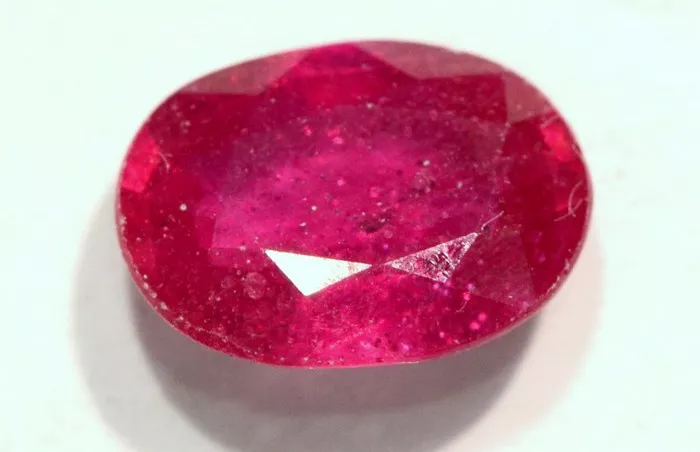Star rubies, with their mesmerizing asterism, have captivated humanity for centuries. The allure of their crimson hue, coupled with the enigmatic star that dances across their surface, has made them coveted treasures in the world of gemstones. While natural star rubies are rare and expensive, advancements in gem synthesis have made it possible to create synthetic versions that closely mimic their natural counterparts. This essay delves into the intricate process of crafting synthetic star rubies, from the historical context to the modern techniques used today.
Historical Background:
The history of synthetic gemstones dates back to ancient times, with the Roman naturalist Pliny the Elder mentioning the use of glass to imitate precious stones. However, it was not until the late 19th century that the first synthetic gemstone, synthetic ruby, was created by the French chemist Auguste Verneuil. Verneuil’s flame fusion process revolutionized the gem industry, making it possible to create synthetic gems that were visually indistinguishable from natural ones.
The synthesis of star rubies, specifically, began in the early 20th century with the development of the flux method. This method involves melting a mixture of alumina, chromium oxide, and other elements at high temperatures to form a crystal that exhibits asterism. Over the years, advancements in technology and the understanding of gem formation have led to the development of more sophisticated techniques for creating synthetic star rubies.
Properties of Star Rubies:
Before delving into the synthesis process, it is essential to understand the properties that make star rubies unique. Rubies are a variety of the mineral corundum, with their red coloration attributed to the presence of chromium. The asterism, or star effect, seen in star rubies is caused by the presence of rutile inclusions within the crystal structure. These inclusions, aligned in a specific orientation, reflect light in such a way that a star-shaped pattern appears when the stone is illuminated.
The quality of a star ruby is determined by several factors, including the intensity of its color, the sharpness and visibility of the star, and the clarity of the stone. Natural star rubies are rare and command high prices, with the finest specimens exhibiting a deep red hue and a sharp, well-defined star.
Synthesis Techniques:
Synthetic star rubies are created using a variety of techniques, each with its advantages and limitations. The most common methods include the flux method, the hydrothermal method, and the flame fusion method.
Flux Method:
The flux method, also known as the Verneuil process, is one of the oldest and most widely used techniques for creating synthetic star rubies. In this method, a mixture of alumina, chromium oxide, and other additives is heated to a molten state in a crucible. A seed crystal, typically made of natural corundum, is then dipped into the molten mixture and slowly pulled out, allowing the crystal to grow on the seed.
To create the star effect, rutile needles are added to the mixture, which align themselves during the crystal growth process. The resulting synthetic ruby exhibits asterism, similar to that seen in natural star rubies. However, the star produced by the flux method is often less distinct and sharp compared to natural stones.
Hydrothermal Method:
The hydrothermal method involves growing crystals in a high-pressure, high-temperature aqueous solution. This method allows for the creation of large, high-quality crystals with excellent clarity and color. To create star rubies using the hydrothermal method, a solution containing alumina, chromium oxide, and other elements is placed in a sealed container and heated to the desired temperature and pressure.
A seed crystal is then introduced into the solution, and over time, the crystal grows as the elements in the solution crystallize onto the seed. The addition of rutile or other inclusions can create the star effect, resulting in a synthetic star ruby that closely resembles its natural counterpart.
Flame Fusion Method:
The flame fusion method, also known as the Verneuil process, is similar to the flux method but involves melting the raw materials in a high-temperature flame. In this method, powdered alumina and chromium oxide are fed into a flame, where they melt and form droplets. These droplets fall onto a rotating pedestal, where they solidify to form a crystal.
The flame fusion method is known for its efficiency and ability to produce large quantities of synthetic ruby quickly. However, the crystals produced by this method often lack the clarity and color intensity of those produced by other methods.
Advancements in Gem Synthesis:
In recent years, advancements in technology have led to the development of new techniques for creating synthetic gemstones, including star rubies. One such technique is the flux growth method, which involves growing crystals from a molten flux at a controlled rate. This method allows for the creation of high-quality crystals with excellent color and clarity, rivaling those of natural stones.
Another advancement is the use of chemical vapor deposition (CVD) to create synthetic gemstones. In this method, a gas containing the desired elements is passed over a substrate, where it reacts to form a thin film of the desired gemstone. While CVD is primarily used to create thin films for industrial applications, researchers are exploring its potential for creating gem-quality crystals.
Ethical Considerations:
As with any synthetic gemstone, the creation of synthetic star rubies raises ethical considerations regarding disclosure and transparency. It is essential for manufacturers and sellers to clearly label synthetic stones as such to avoid misleading consumers. Additionally, the use of synthetic gemstones in place of natural ones can help alleviate the demand for mined gems, reducing the environmental impact of mining.
Conclusion:
Synthetic star rubies are a testament to human ingenuity and technological advancement. While they may not possess the rarity and mystique of their natural counterparts, synthetic star rubies offer a more affordable and ethical alternative for those seeking the beauty of a star ruby. With continued advancements in gem synthesis, the future holds promise for even more lifelike synthetic gemstones that blur the line between natural and synthetic.


